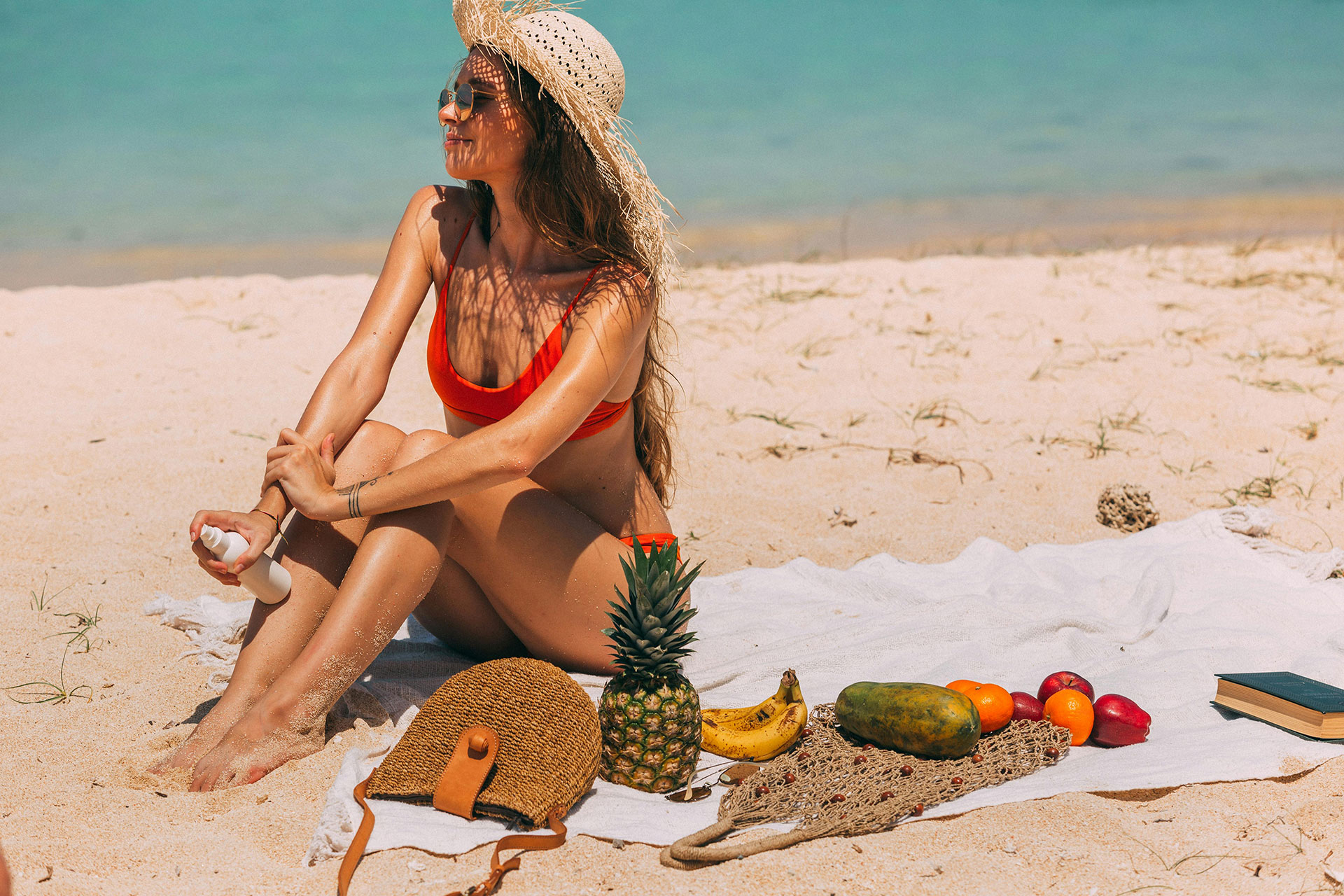Hello everyone, Elena is speaking here. Sun is hot! Especially in Greece it can be too… hot! That is why you should always protect your skin against harmful radiation! How? Here is what to do!
Get a hat!
Ensure your protection by wearing a hat, preferably one with a brim extending at least three inches all around to shade not only your face and scalp but also your neck, shoulders, and upper back. Consider styles such as bucket hats, outback hats, and tightly woven straw hats. While baseball caps are better than nothing, they do not provide adequate protection.

Use sunscreen
Sunscreen is effective only when applied in sufficient amounts. Apply a full ounce (equivalent to two tablespoons) to cover your body, including a nickel-sized amount for your face, at least 30 minutes before heading outdoors. Convenient spray sunscreens are also an option. Remember to reapply every two hours while outdoors and immediately after activities like swimming, towel-drying, or heavy sweating. It’s crucial to avoid heading to the beach between 10 a.m. and 4 p.m., when the sun is at its hottest, to minimize exposure and steer clear of large crowds.
In Greece, you can find sunscreen at supermarkets or pharmacies, with a wide variety of brands available. Whichever brand you choose, we encourage you to make the purchase. Keep in mind that for your body, the sunscreen should offer at least 50+ protection, and for your face, opt for a minimum of 30+ protection. When it comes to kids, it’s advisable to always choose sunscreen with 50+ protection.

If you love and respect your health of your skin, never get out during the hot summer days without wearing sunscreen, a hat, and a pair of sunglasses!
Wear your classy sunglasses
Some surfaces reflect UV radiation, leading to a double impact on the skin and eyes, thereby increasing your exposure. Examples of such surfaces include sand, water, and sea foam. While sunglasses with polarized lenses effectively reduce glare, the primary consideration in sunglass selection should be UV protection. Opt for a pair that filters out 99-100 percent of UV rays. Consider trying oversized frames and wraparound shades, as they prevent UV exposure at the temples.

Prefer light shades of clothing
When selecting clothes, take into account both color and fabric: Dark or bright colors absorb more UV radiation than lighter shades, and denser fabrics such as denim or canvas provide better protection compared to sheer or loosely woven materials. Opt for loose-fitting clothes instead of tighter garments, as tight clothing may stretch and leave skin exposed to the sun. Consider wearing long-sleeved shirts, long pants, or sarongs to stay cool while ensuring adequate protection.
Stay hydrated!
Drink plenty of water throughout the day to prevent dehydration caused by the heat. Additionally, prefer fruits and vegetables, which have a high-water content and contribute to our hydration. This way, we can avoid heatstroke. Keep in mind to always have a bottle of water in your bag just in case you need it.



